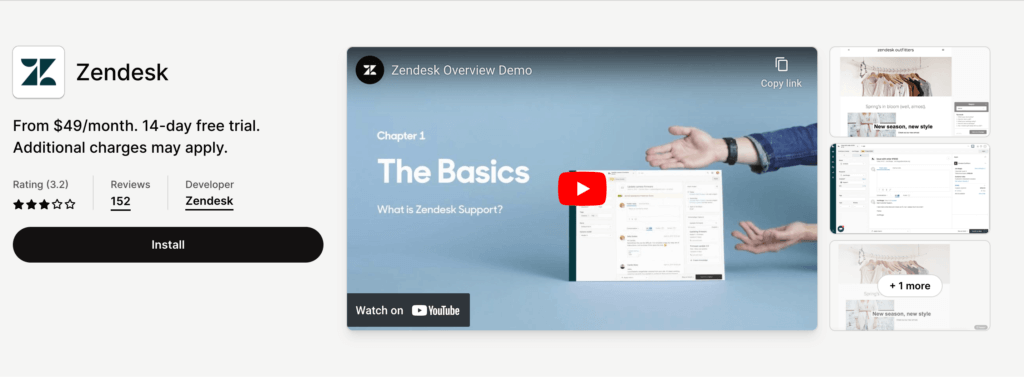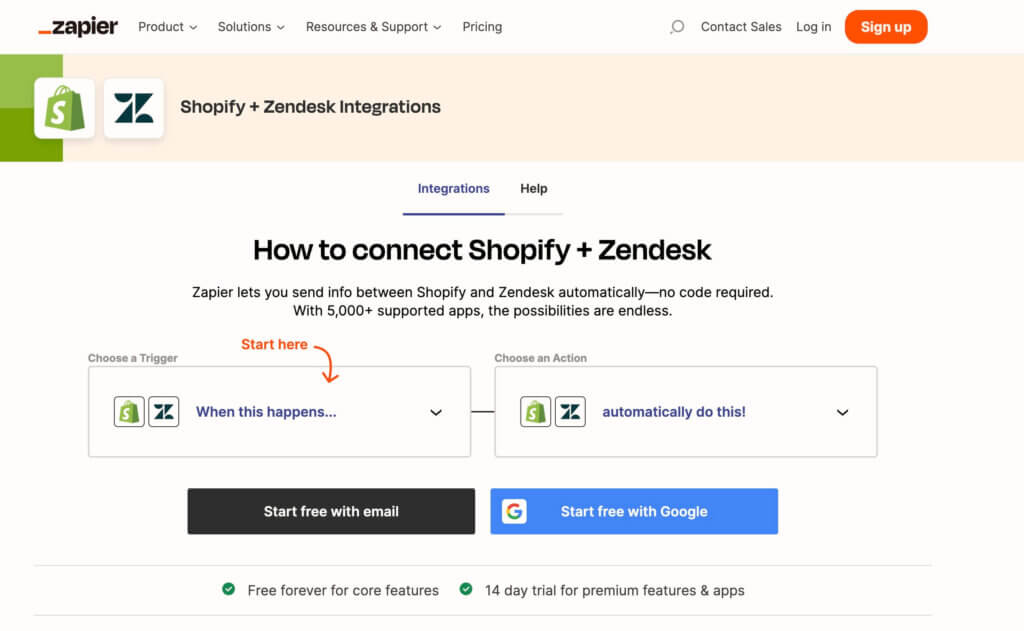Understanding the landscape of integrations between customer service platforms and eCommerce solutions like Shopify is vital for any online business. You might be contemplating whether Zendesk, one of the prominent players in the customer service software market, offers seamless integration with Shopify. It’s worth noting that yes, Zendesk and Shopify can be integrated, aiming to bring together customer data and support ticket management. However, just knowing that these platforms can be connected doesn’t offer a complete solution to the challenges businesses often face.
Does Zendesk integrate with Shopify?
Typically, businesses find themselves grappling with fragmented customer data strewn across multiple platforms. This disjointed setup results in agents flipping between different systems to fetch relevant customer information, which is not just time-consuming but also prone to errors. Zendesk addresses this by allowing Shopify data to be accessible within its platform, but the question remains: Is this the most efficient and flexible solution for your specific needs?
For example, our platform offers integrations with Shopify that not only streamline ticketing and customer data but also offer advanced features like AI-driven suggestions and multi-channel support right from the dashboard. Whether it’s through 1 of our 200+ native integrations, we aim to provide a more cohesive and efficient customer service experience that aligns perfectly with your business goals. So while Zendesk does offer a Shopify integration, it’s important to explore and compare features to determine the best fit for your operations.
TLDR
- Zendesk does offer integration with Shopify, aiming to centralize customer data and support ticket management. However, it may lack the flexibility to adapt to complex or unique customer service workflows.
- The Zendesk app for Shopify has limitations, including a rigid set of predefined configurations and potential for vendor lock-in, as it centralizes data within the Zendesk ecosystem.
- An alternative to native integration is using Zapier, a third-party tool that offers more customization and control over how Shopify and Zendesk interact, though it may require technical expertise and setup time.
- Zendesk is not specifically tailored for eCommerce businesses, lacking features like native Marketplace integrations for platforms like Amazon, eBay, and Walmart, as well as a Smart Inbox feature for centralized customer inquiries.
- In comparison, eDesk offers features explicitly designed for eCommerce, including cutting-edge AI capabilities for automating tasks and understanding customer sentiment, making it potentially more practical and cost-effective for Shopify sellers.

How does Zendesk work with Shopify?
There are 2 main ways of integrating Shopify & Zendesk
- Native Zendesk App
- Using Zapier
We go through each option in further detail below.
Integrating Zendesk through the Shopify App

While the Zendesk app for Shopify promises ease of use with its straightforward installation process, it comes with limitations. One major drawback is the rigidity in customization. The app offers a limited set of predefined configurations and lacks the flexibility to adapt to complex or unique customer service workflows. This can be problematic for businesses looking for a solution that can fully adapt to their specific needs.
Additionally, the Zendesk Shopify app primarily centralizes customer data within the Zendesk interface. While it may seem convenient, it can also create a dependency on the Zendesk ecosystem for customer service operations. Organizations may find it challenging to migrate to another customer service solution or integrate additional tools, leading to vendor lock-in.
Lastly, despite offering live chat and automated ticket creation features, these are rather standard offerings in today’s customer service software landscape. The app doesn’t bring any unique or innovative features that set it apart from other competitors in the market. As such, businesses looking for a more feature-rich or tailored experience may find the Zendesk Shopify app lacking.
Using Zapier to Connect Shopify and Zendesk

Another option for connecting Shopify and Zendesk is through Zapier, a third-party automation tool that facilitates the flow of data between different apps and services. To set up this integration, users need to create a “Zap,” which consists of a “Trigger” in Shopify and an “Action” in Zendesk. For example, a new order in Shopify could be set to trigger the creation of a new ticket in Zendesk.
Zapier provides greater customization than the native Zendesk app. With Zapier, you can define more specific conditions for when and how data should move between Shopify and Zendesk. This is especially useful for businesses with unique or complex workflows that may not be fully accommodated by the standard Zendesk Shopify app. For example, you can set up a Zap that sends a follow-up email through Zendesk only when an order exceeds a certain amount or when a specific product is purchased.
The downside to using Zapier is that it may require a bit more technical know-how and initial setup time. However, for businesses that require a higher level of customization and control over how their eCommerce platform and customer service software interact, Zapier provides a powerful and flexible alternative.
Is Zendesk a practical option for Shopify sellers?
Zendesk is often considered a universal customer service solution, catering to various types of businesses. While its extensive set of features can be beneficial for many sectors, it’s not specifically tailored for eCommerce businesses like Shopify sellers. This limitation becomes evident when you consider that Zendesk lacks native Marketplace integrations for platforms like Amazon, eBay, and Walmart. To bridge this gap, sellers frequently have to rely on third-party applications, which not only complicates the setup but also adds additional costs for the integration. The lack of seamless integration can be a stumbling block for sellers aiming for streamlined customer support across multiple sales channels.
Another significant limitation with Zendesk is the absence of a Smart Inbox feature, a key feature for eCommerce focused customer service. A Smart Inbox centralizes all customer inquiries from various platforms, providing an ideal view tailored to the needs of an eCommerce business. Without this, managing customer interactions on Shopify and other marketplaces can become cumbersome and inefficient.
On the other hand, eDesk offers features that are explicitly designed for eCommerce sellers. One of its unique selling propositions is its cutting-edge AI capabilities. Our AI capabilities are included in every plan, helping businesses to automate repetitive tasks, escalate priority issues, and even understand customer sentiment. This makes it easier to offer timely and contextually relevant customer support, something which is critical in the fast-paced world of eCommerce. The contrast becomes evident when comparing eCommerce specialized solutions like eDesk against more generalist platforms like Zendesk. Given these points, Shopify sellers may find eDesk to be a more practical and cost-effective solution for their specific needs.

